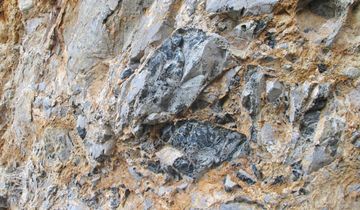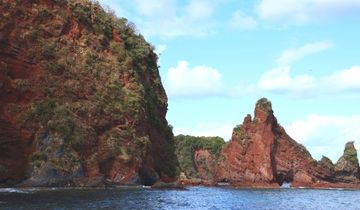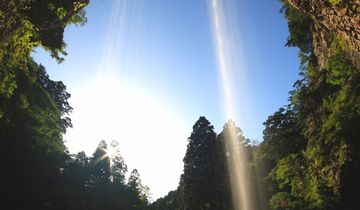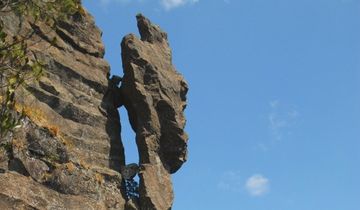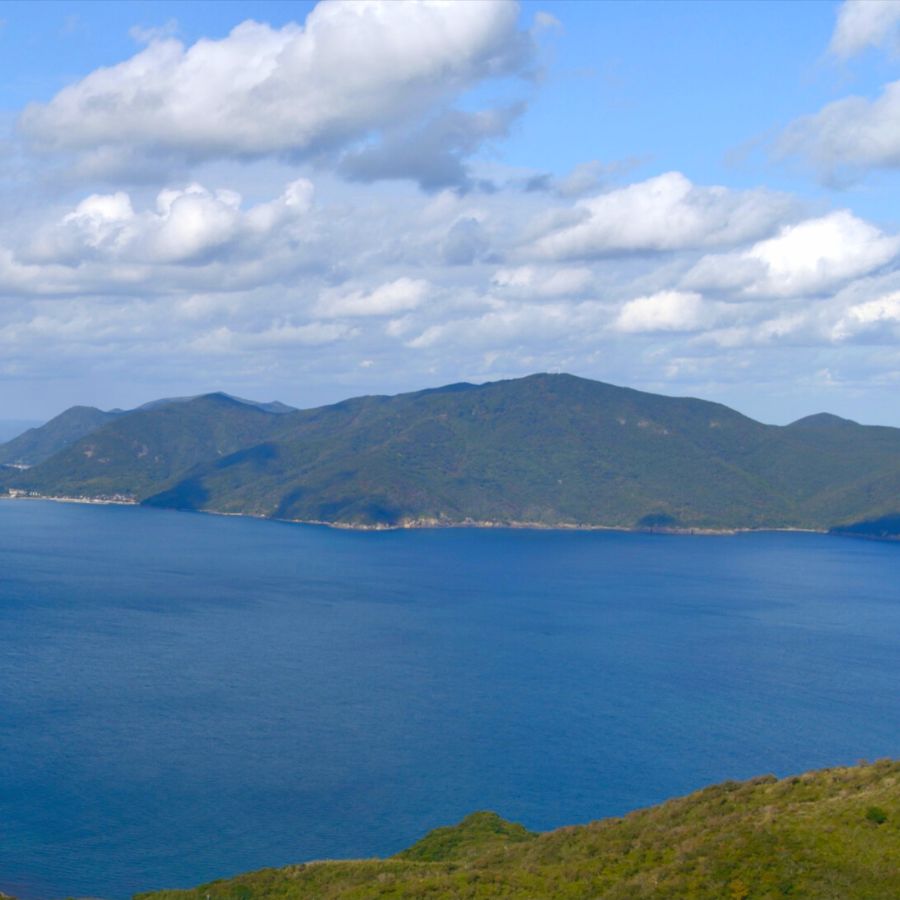
Geohistory - Terrain
Mt. Takuhi, the highest mountain in the Dōzen Islands at 452 m, is the central cone of the volcano that erupted inside the caldera during the later part of Dōzen's volcanic activity. The Dōzen Caldera is characterized by its structure with Mt. Takuhi in the middle, surrounded by the inner sea, which is in turn surrounded by the islands that form the caldera's outer rim.
The central cone is composed of welded to non-welded trachytic pyroclastic rock. The pyroclastic rock that makes up the majority of Mt. Takuhi is thought to have been accumulated inside the volcano's crater. Additionally, the foot of the mountain is an important site for understanding the geological history of the Dōzen Islands; it contains approximately 20–10 million year old sedimentary rock and plutonic rock (quartz syenite, rare in Japan) that form the foundation of the Dōzen volcano.
Takuhi Shrine is located near the summit of Mt. Takuhi, with the main shrine built partly inside a cave in an outcrop of pyroclastic rock. The enshrined deity was widely recognized as a deity of safe sea voyages during the Edo period (1603–1867) when kitamaebune trading ships flourished.


